

Catch Fish with
Mike Ladle
Information Page
SEA FISHING
For anyone unfamiliar with the site always check the FRESHWATER, SALTWATER and TACK-TICS pages. The Saltwater page now extends back as a record of over several years of (mostly) sea fishing and may be a useful guide as to when to fish. The Freshwater stuff is also up to date now. I keep adding to both. These pages are effectively my diary and the latest will usually be about fishing in the previous day or two. As you see I also add the odd piece from my friends and correspondents if I've not been doing much. The Tactics pages which are chiefly 'how I do it' plus a bit of science are also updated regularly and (I think) worth a read (the earlier ones are mostly tackle and 'how to do it' stuff).
'Why some fish fight harder than others – Part 2.'
Different species of fish fight in different ways according to their nature, size, shape, condition and even how they are hooked. Some are placid and others much livelier; although, most angling books and magazines will contain features describing the ‘battles’ that the authors have had with everything from dace to dorado.
There is no doubt that there are big differences between species, but comparisons are difficult. I suppose it boils down to what you find most exciting – Are you happy with lots of small fish and plenty of bites, perhaps you prefer a wide range of sizes and species or, as some do, a few larger specimens. On a different tack, we are dealing with features such as where they live, their senses and reactions, ‘shyness’ to disturbance, pickiness with food, how they feed. Lastly, there is the matter of your potential catch’s speed, endurance, acrobatics, the nature of their attack and so on. It’s mostly these latter features that I am dealing with here.
The problem with any comparison lies in the fact that the tackle used for the various fish can differ a lot, from the long rods and relatively delicate lines of many coarse and fly anglers to the hefty beach-casting equipment or much stronger boat gear of most sea fishermen. Of course, at the extremes of fish sizes and angling conditions some of these differences in gear are essential to success, but this may make it difficult or impossible to judge the relative merits of the species, when it comes to landing them.
My pal Nigel using a long rod and fine line to play a grayling.
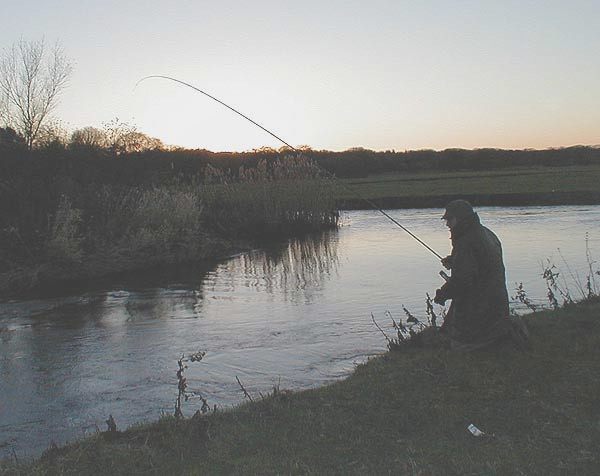
Nigel again, this time playing a porbeagle shark from the boat.
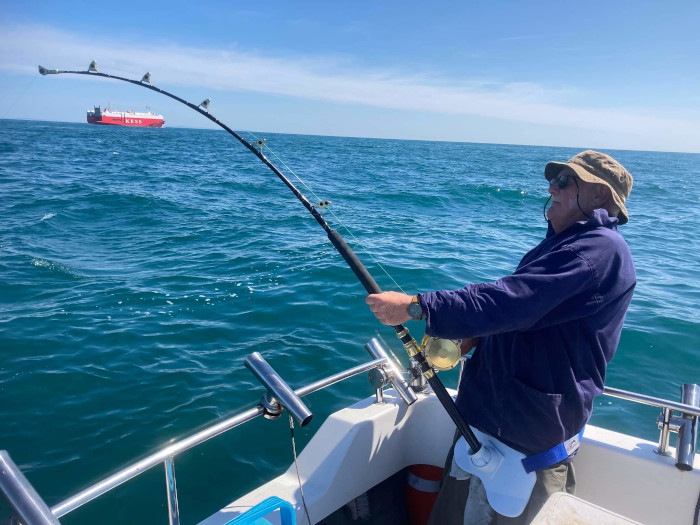
Although it was never intentional, my own rather lazy, and admittedly cheapskate, approach to fishing has ironed out some of these differences, and often allows me to judge the capabilities of what I catch. These days I nearly always fish with my feet on the ground. Also, although it sounds odd, whether I go to the river, lake or sea-shore I will often pick up, and use, the identical ‘spinning’ rod and ‘fixed-spool’ reel (and, above all, line). For me, the ‘usual’ tackle has become even less varied since the introduction of braided lines.
It is well known that some species, for example bonefish, jacks, and bluefish are endowed with lots of speed, strength and endurance; they rarely jump but, as you stand rooted to the shore, large specimens may strip all your line and could even break it.
Bonefish are often fished for with fly gear but they are equally lively (and catchable) on spinning or bait tackle.
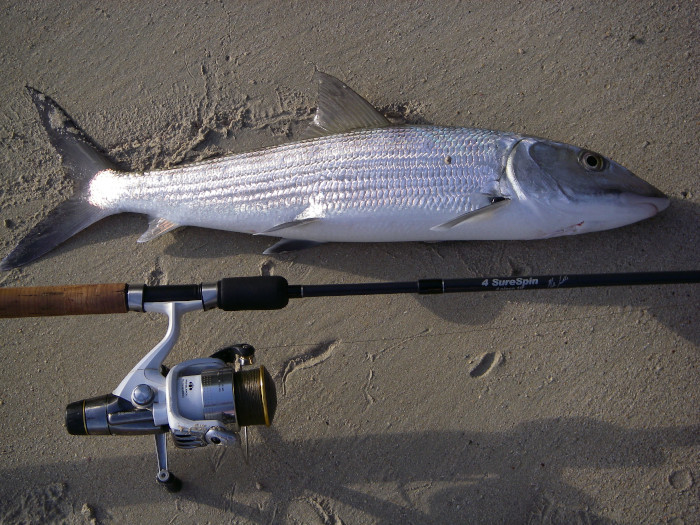
Jacks are real powerhouses.
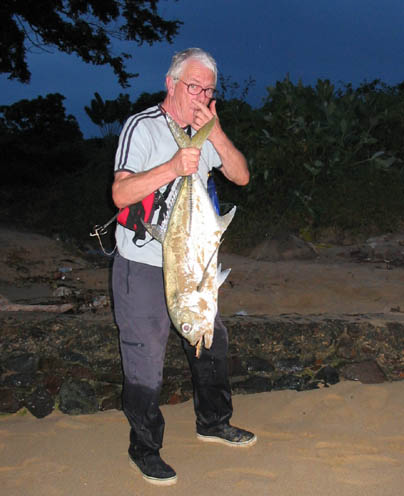
Bluefish, in the USA often derided by comparison with striped bass in the same waters, are simply jacks with a good set of teeth.
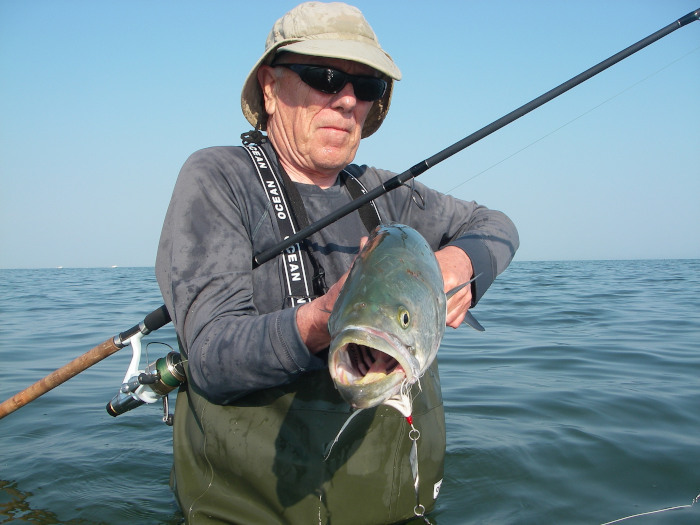
Other fast-moving species – seatrout, tarpon, ladyfish, garfish/houndfish and barracuda for example - are also very active swimmers. In addition, these fish will frequently jump one or more times in the course of being played and may come unstuck at this point. My impression is that the jumping tends to tire them more quickly than those which keep their heads down.
Seatrout are often distinguished from salmon by the fact that they jump - a lot.
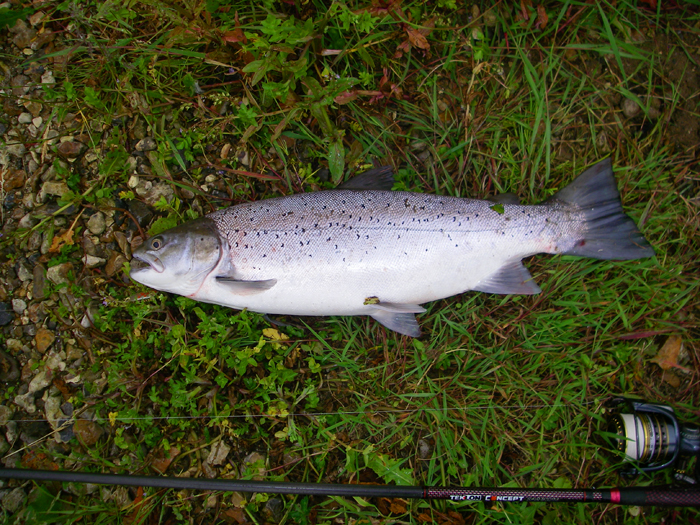
The tarpon, another notorious leaper, grows to a very large size.
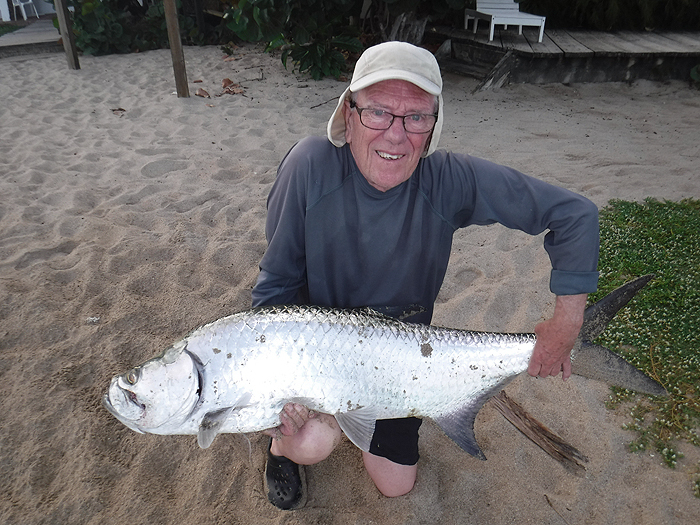
Ladyfish swim very quickly and often throw in jumps for good measure.
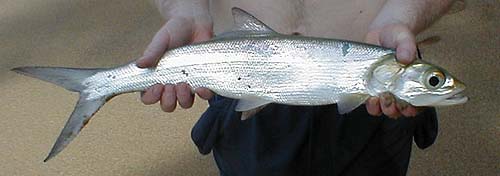
Houndfish and garfish are particularly noted for their aerobatics.
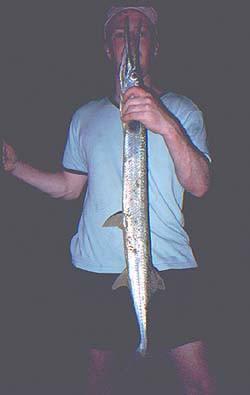
Over a short distance barracuda are probably the fastest fish I’ve caught and they often leap but lack stamina.
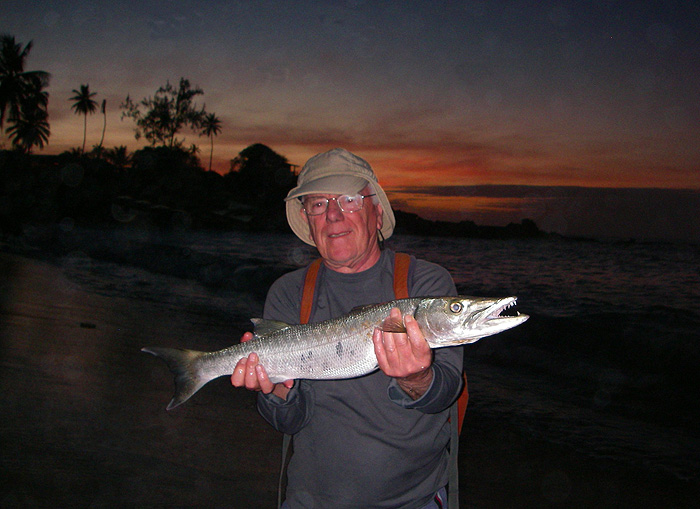
Mackerel, grey-mullets, scad and a number of other, smaller, pelagic fishes, although they may be built for speed, don’t often jump and are rarely big enough to test line strength; while perch, chub and some flatfish, which are of similar sizes, are attractive and may be very interesting to catch but rarely put up much resistance.
Mackerel are small, swift and have lots of stamina
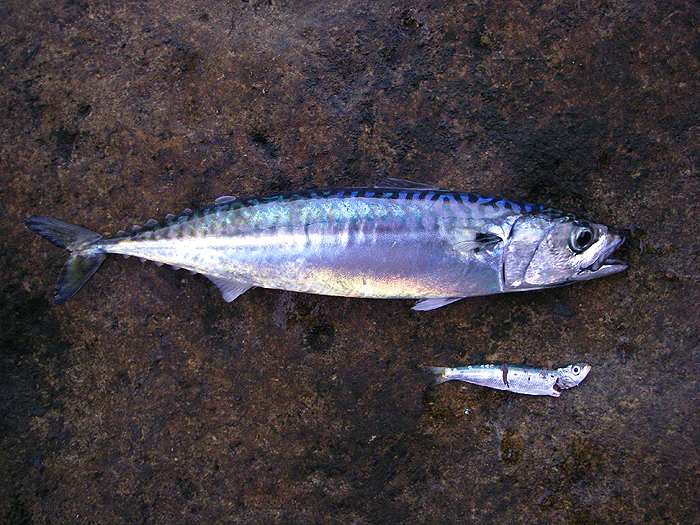
Grey-mullets, like this thinlip, are strong and have plenty of endurance.
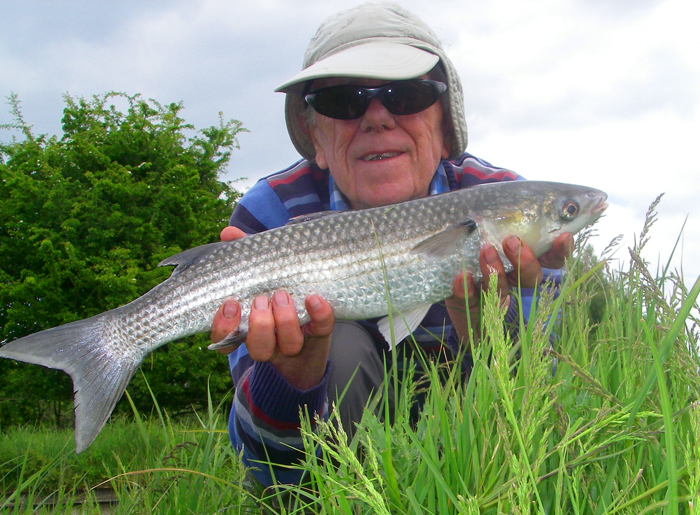
Scad are really just tiny jacks.
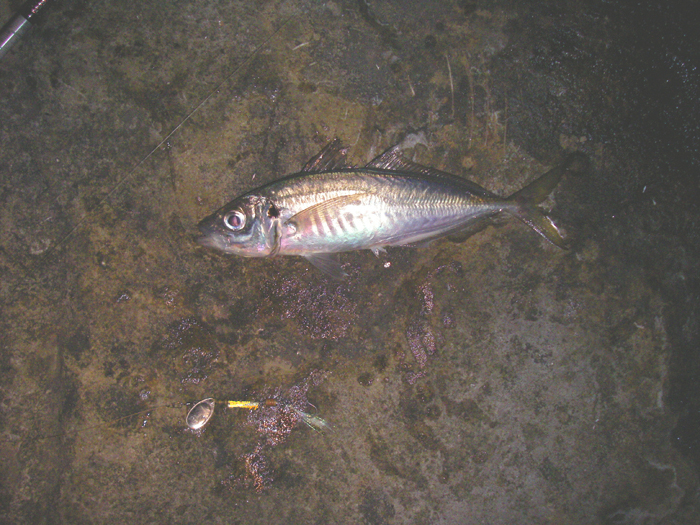
Perch are beautiful fish but not the most exciting things to wind in.
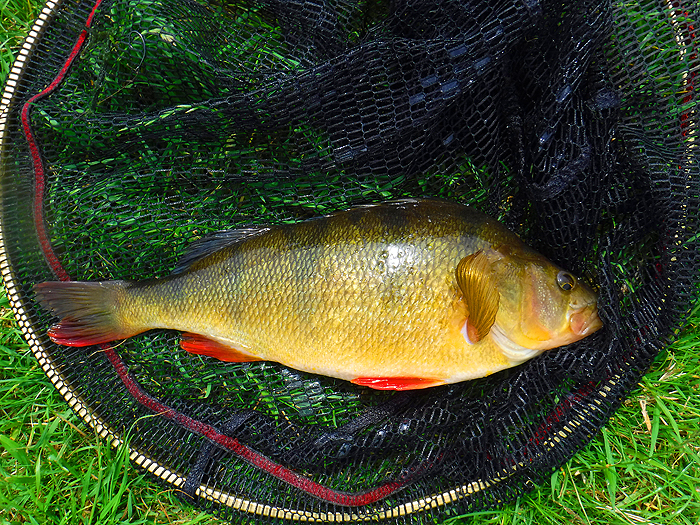
Chub are also attractive but rarely put up much of a struggle.
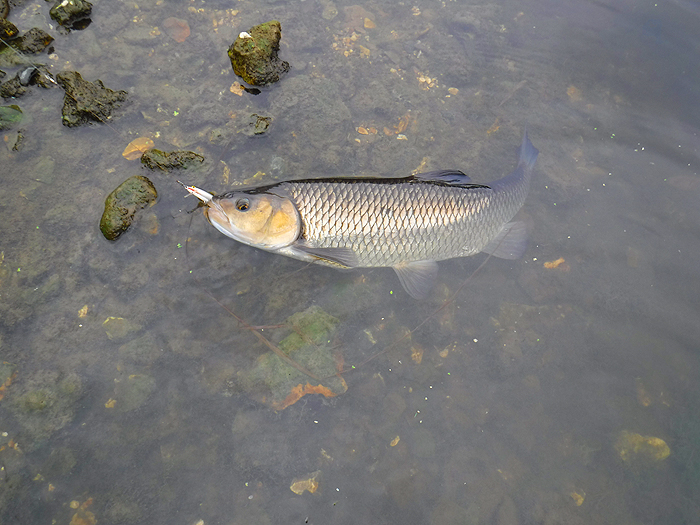
Flatfish are powerful, and some may use their large surface area to advantage.
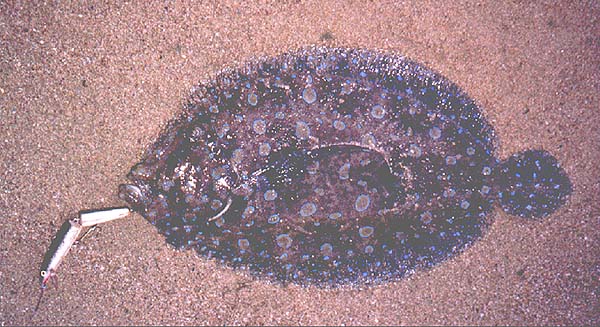
Another group, including, wrasse, eels, pollack, and rays typically try to escape by either making a powerful first run as they retreat into caves, crevices, weed beds or simply by clinging tightly to the sea-bed. The result can be an immovably fixed line.
Wrasse, like this ballan, are notorious for retreating into caves and under ledges.
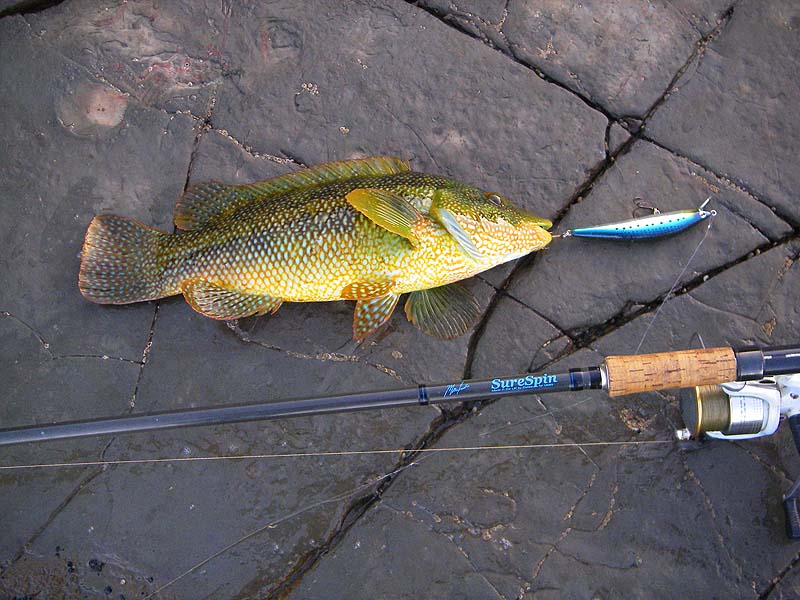
Eels are perfectly designed to wriggle backwards into hidey holes and simply hang on.
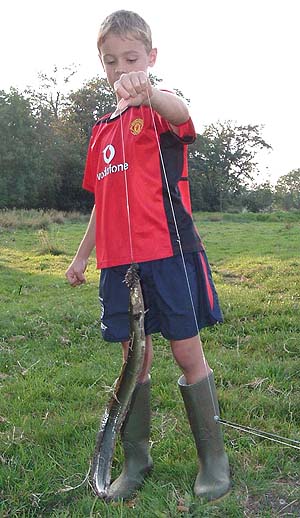
Pollack usually make one almost irresistible plunge for the safety of weed beds.
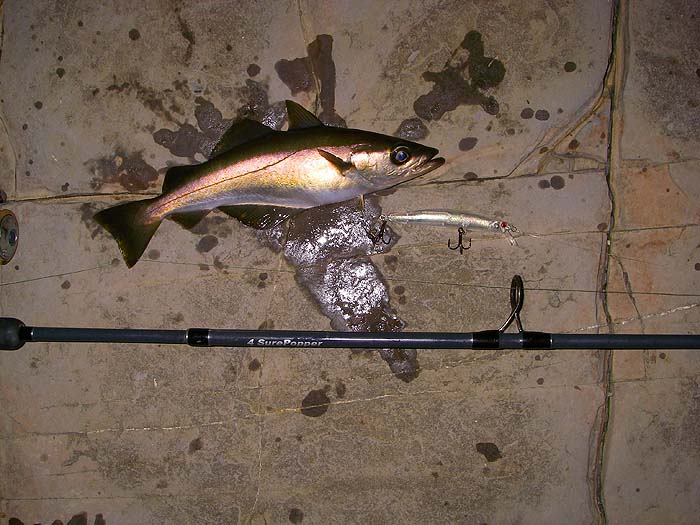
All rays may hug the seabed but eagle rays, like this one, also make powerful runs.
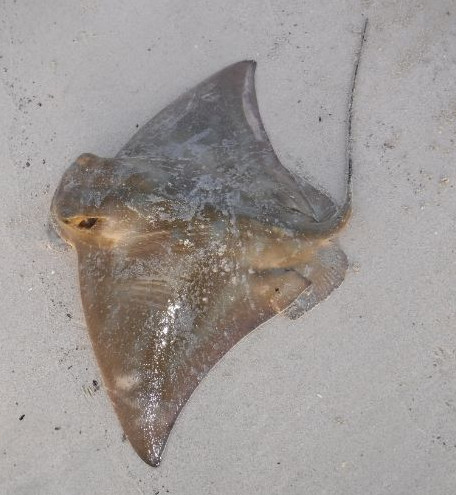
In contrast, bass, carp, pike, catfish, salmon, snook, striped bass and the like, at least in their larger sizes, mostly have a fair turn of speed, a good deal of power and may live in snaggy enough situations to make you think a bit about how best to try and land them. Of course, none of these ‘escape tactics’ are universal and often an individual fish may exhibit a combination of strategies to avoid being landed.
Bass take fiercely and usually fight hard whatever method is used for them.
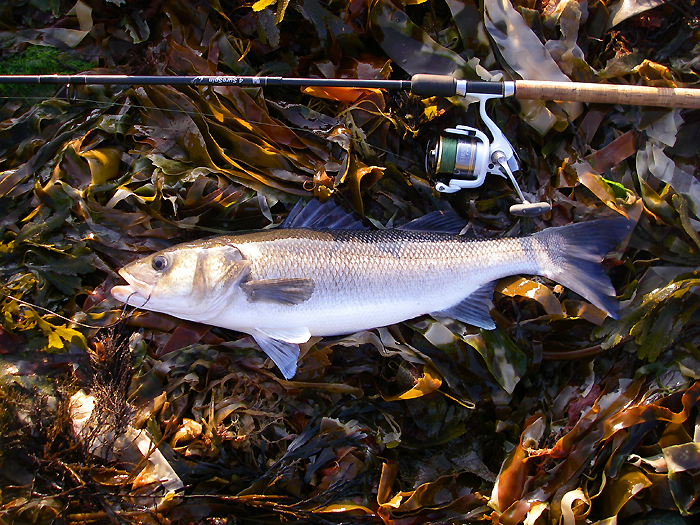
To say that they usually live in fresh still-waters, carp are remarkably powerful fighters.
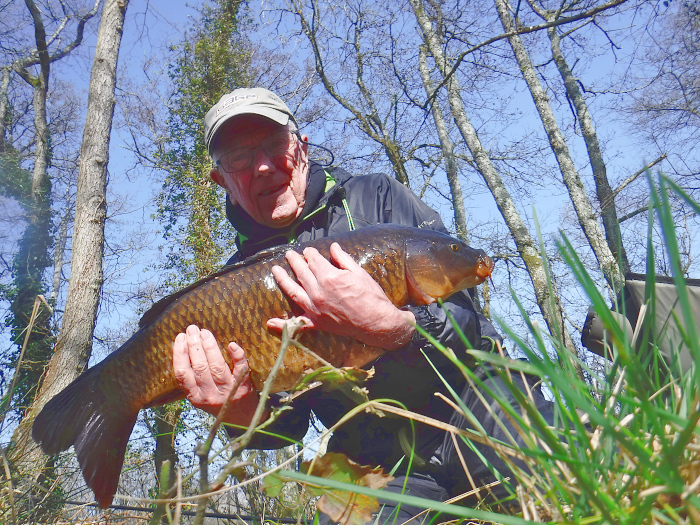
Pike are often quite the equal of carp, bass or salmon when caught on similar gear.
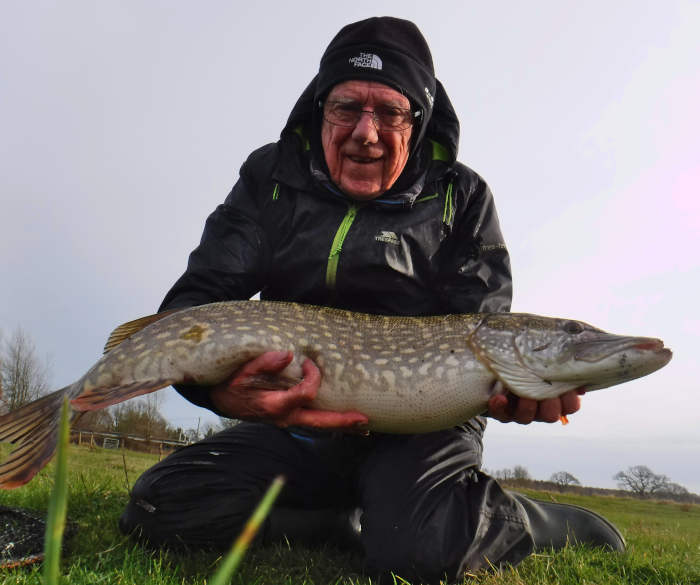
Many species of catfish, marine and freshwater, grow large and are surprisingly powerful swimmers.
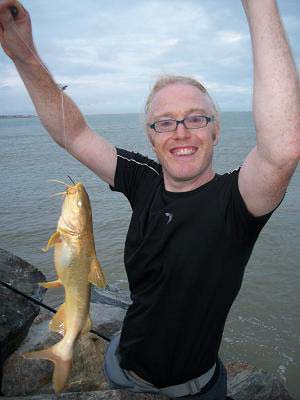
Salmon are strong battlers, particularly when they are fresh in from the sea, but they quickly lose much of their vigour as spawning time approaches.
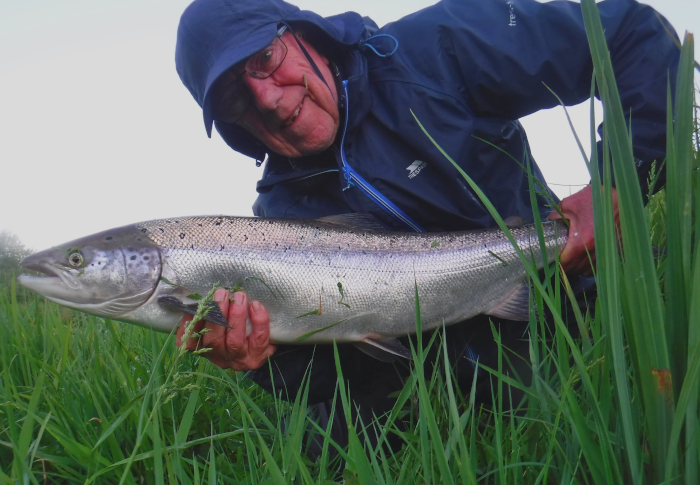
Snook are beautiful fish and fight in a similar way to bass or salmon of similar size.
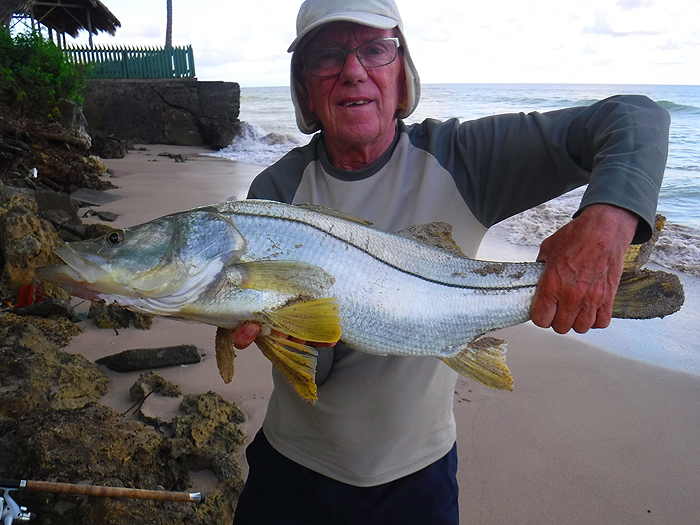
Striped bass are simply expanded versions of our own smaller relative.
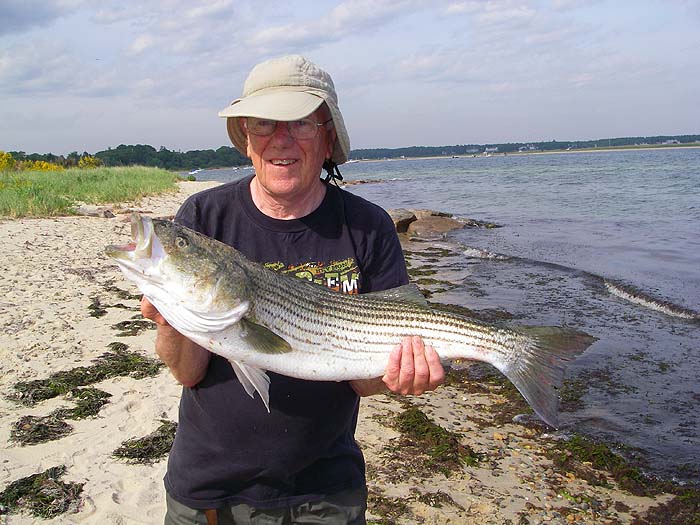
To return to the point. These days I often find myself using exactly the same rod, reel and (particularly) line for catching most of these fish. So, perch, mackerel, garfish, scad, mullet, bass, chub, wrasse, seatrout, bonefish, pollack, or ladyfish ranging from a few-hundred grams up to a several kg and species such as carp, salmon, snook, pike, rays, jacks and tarpon which may at times be considerably larger are all caught on the same sets of gear.
Don’t get me wrong – my tackle is not the ideal way of fishing for any of these fish, but it is generally more than adequate for most, and gives me lots of enjoyment. You may (probably will!) consider that twenty- or thirty-pound braid is ‘way over the top’ for two-pound perch or conversely lacking ‘strength’ for a good-sized tarpon, jack, sting ray, salmon or carp, but it generally does the job effectively. Of course, in tricky situations or if you expect to hook particularly large fish in really difficult conditions you would be stupid not to ‘beef-up’ the strength and length of your lines and to use appropriate traces.
Before criticising my (ridiculously?) heavy/light lines, bear in mind that no one should ever want to lose a fish, so it is pointless using light tackle simply for the ‘bragging rights’ or to ‘give the fish a chance,’ as I have sometimes seen written. At the other end of the scale some fish may, of course, be so big and strong, that they can pull hard enough and for long enough to reach the shelter of snags or even to empty your spool – this has rarely (but sometimes) been the case for me. In other words, I’m usually fairly confident of landing anything that I may hook.
If I felt that I would like the smaller fish to take more line or to struggle for longer (why would I?) it would be simple to ease the clutch a bit and ‘pretend’ that I was using light line. In contrast, I suppose you may think that the relatively heavy gear might ‘put off’ some of the fussier species and you would possibly get more bites or catch more fish by ‘scaling down the line strength or the breaking strain of the trace. This may, of course, be true if you are using single maggots or crumbs of bread to catch roach, dace gudgeon and the like or fly-fishing for trout but, having said this, I still catch plenty of chub and perch on my braided line, wire traces and 7kg nylon leaders.
On the credit side of the ‘basic tackle’ approach, I think it is also important to remember that using relatively ‘strong’ line minimises the chance of littering the environment with lost hooks, lures and traces, in the event of hooking bankside plants, trees, wrack, kelp and even rocks. It is also worth noting that fish which escape with hooks in their mouths are a rarity.
So, do I have a list of the species which I’ve caught that (size for size) pull hardest and are most difficult to land? Firstly, the list isn’t comprehensive, as there are many fish which I’ve too rarely caught make a judgement. It’s also tricky because every species will have some individuals which are ‘fitter’ than others and any fish in poor condition may not put up much resistance. The places in which the fish live may also present particular problems (they are not all swimming in endless, open-water) but here is what I’ve decided in terms of sheer excitement -
Bonefish, jacks, bluefish, mackerel, seatrout, tarpon, barracuda, ladyfish, bass, striped-bass, snook, grey mullets, carp, tench, salmon, pike, rays, eel, conger, pollack, coalfish, cod, scad, wrasses, perch, chub, roach, dace, bream. Because angling is a very individual business and many of these fish can scarcely be separated in terms of action, probably no one else would have the same list in the same order as myself. Of course, each species poses its own set of problems, unrelated to liveliness and power, and perhaps solving these is really what it’s all about!
– PLEASE TELL YOUR TWITTER, FACEBOOK, EMAIL FRIENDS ABOUT THESE BOOKS.
THE SECOND WAVE

Written with Steve Pitts this is a SEQUEL TO THE BESTSELLER "Operation Sea Angler" IT'S AVAILABLE ON PAPER FROM -
HOOKED ON BASS
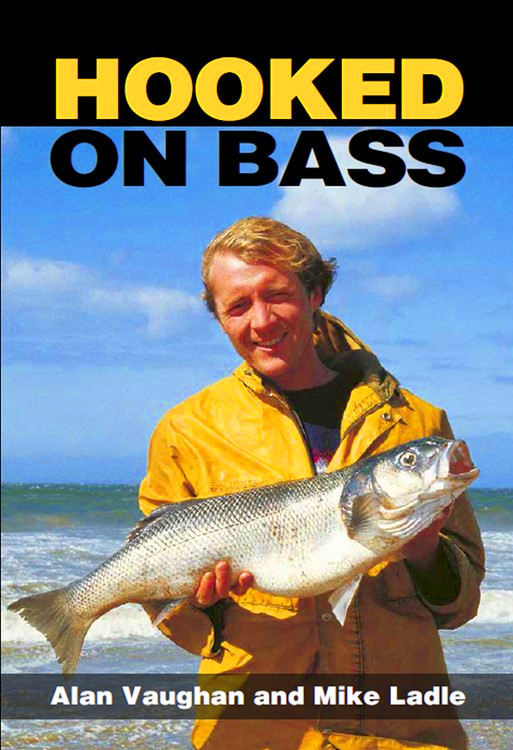
Written with Alan Vaughan. NEW PRINT OF THE ORIGINAL: IN PAPERBACK. Copies available from all good book shops RRP £14:99 -
ANGLING ON THE EDGE
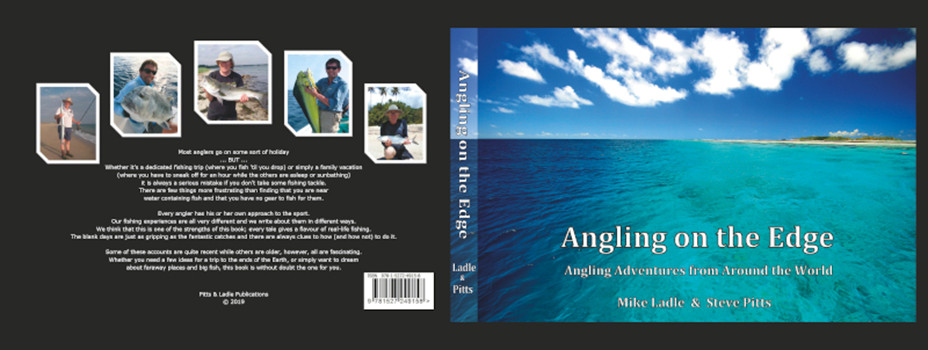
Copies can now be ordered (printed on demand) from Steve Pitts at £34.00, inc. Royal Mail Insured UK Mainland Postage.
To order a book send an E-MAIL to - stevejpitts@gmail.com
FISHING FOR GHOSTS
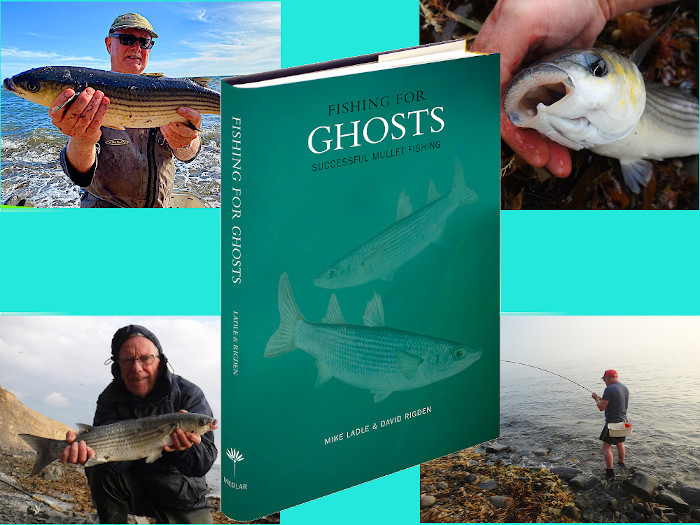
Written with David Rigden. Copies from
If you have any comments or questions about fish, methods, tactics or 'what have you!' get in touch with me by sending an E-MAIL to - docladle@hotmail.com